Carol Williams, author of ‘Madingley Rise and Early Geophysics at Cambridge’ spent 25 years working as a researcher at Madingley Rise between 1965 and 1993. As part of our Hidden Department series, she delves into the history of The Stables.
When Hugh, (later professor) Newall, the Astronomer, had Madingley Rise built in 1891 he naturally had the stables built too. They face onto a small courtyard behind the main house and today are connected to the Institute for Energy and Environmental Flows.
Back then, you would have seen the coach house where there was a trap, a landau and a luggage car and in addition Mrs Newall also had a picnic bus with windows. For smart occasions there was a brougham. Not all these fitted into the coach house and the overflow was kept under cover across Madingley Road on Professor Newall’s 32 acres of land at Vicar’s Farm. Beyond the coach house were the actual stables where the four horses, Union Jack and Winsome and Mignonette and Deuce, the latter two black horses who drew the brougham, were individually stabled. There was also a workshop. In the days when I worked in the office above, these stables still existed.
In 1890 Hugh Newall gave up his post of Senior Demonstrator at the Cavendish Laboratory under J.J. Thompson in order to work at the Observatory. There he took on the task, without stipend, of running the telescope that the Observatories had inherited on his father’s death in 1889. The other side of this deal was that the University agreed to lease a portion of Trinity land to provide him with sufficient space to build a house within 500 yards of the Observatories. Further land was leased from St John’s to provide paddocks for the horses and to grow the alfalfa for their feed.
A coachman, Mr Arthurs, was hired in 1901; he moved into the small flat above the stables and coach house. The accommodation consisted of a bedroom looking out today across the cycle racks, and a living room that stretched across the building with a dormer window overlooking the courtyard and the back wall forming the boundary with the University Farm. Mr Arthurs in his livery would cut quite a figure driving his master around Cambridge and Newall’s outfit was one of the last coach and horses to be seen locally. When Arthurs married in 1908 and started a family, they soon grew out of the small flat and two bungalows were built in the field on the southwest side of the garden, one for the Arthurs and the other for one of the gardeners.
The post-Newall period
After the death of Professor Newall in 1944, with the lease almost expiring, he bequeathed Madingley Rise to Trinity College. The house was let to private tenants by Trinity but on the decision to upgrade the School of Geodesy to the Department of Geodesy and Geophysics in 1955, the University negotiated with Trinity and took over the house in order to house the new Department. It was at this time that certain alterations were made to the house and stables. In the mid-1960s Drum Matthews’ office occupied the Arthurs former bedroom, whilst the living room had the addition of chart cabinets and storage racks for rolls of maps. Drum used the next-door hay loft as a location to keep his collection of 1:1 million charts with vertical profiles of magnetic anomalies made out of polystyrene. He would crawl around these trying to see whether any lineations could be seen through the profiles. Downstairs a small workshop was used by Marcia Miller to prepare samples for her husband Jack for geochronology.

In 1980, with the creation of the new Department of Earth Sciences, the workshop, hay loft and chart office were modified to accommodate the equipment for Jim Long and his team operating the ion probe.
When the BP Institute was under construction around 1995, the former Arthurs’ bedroom, living room and hayloft were converted into three bedsits for visiting scientists and the coach house (by then a garage) and the actual stables were converted into a seminar room for the BP Institute.
This is an extended version of an article which first appeared in GeoCam 2024.


